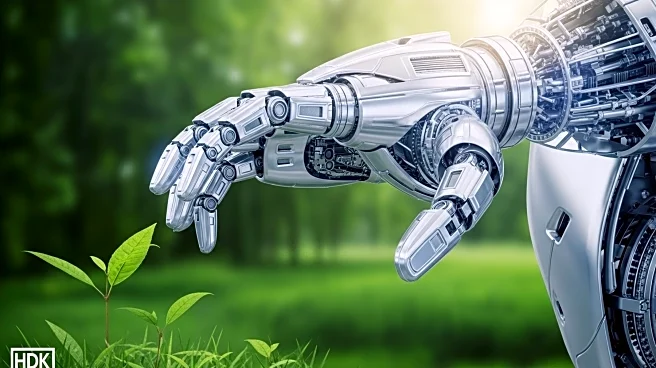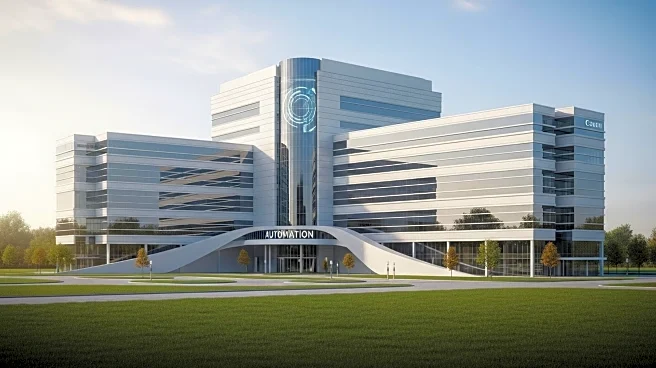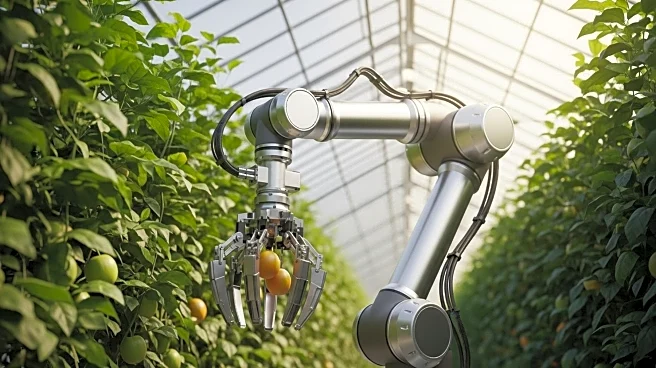What's Happening?
The U.S. is being urged to adopt a robotics strategy similar to China's to enhance its manufacturing sector and economic competitiveness. The call comes amid concerns that the U.S. is lagging behind in automation and manufacturing efficiency, which are crucial for industrial growth. The current administration has focused on bringing manufacturing back to the U.S. through tariffs and policies, but a significant labor shortage remains a challenge. The Manufacturing Institute estimates a need for 3.8 million additional workers by 2033, with a potential $1 trillion annual opportunity cost if these positions remain unfilled. Robotics and automation are seen as essential to addressing these gaps, with private investments in robotics startups reaching $6.1 billion last year. The advancements in robotics, driven by breakthroughs in AI and computer vision, promise increased productivity and efficiency.
Why It's Important?
The push for a national robotics strategy is significant as it could transform the U.S. manufacturing landscape, making it more competitive globally. By adopting advanced automation, the U.S. could mitigate labor shortages and reduce the opportunity cost associated with unfilled manufacturing jobs. This shift could also lead to substantial economic growth and contribute to decarbonization efforts, as robotics can enhance efficiency in various sectors, including energy and industrial infrastructure. The potential for robotics to drive down emissions and improve productivity highlights its role in addressing both economic and environmental challenges. The U.S. has the innovation capacity to lead in this area, but it requires a strategic vision and commitment to integrate robotics into its economic and climate strategies.
What's Next?
The U.S. needs to develop a cohesive national strategy to integrate robotics into its manufacturing and climate policies. This involves fostering innovation, investing in robotics technology, and creating policies that support automation adoption. The upcoming RoboBusiness 2025 conference in Santa Clara, California, will feature discussions on closing the robotics gap with China, providing a platform for stakeholders to explore strategies and collaborations. The focus will be on leveraging robotics to enhance industrial productivity and sustainability, with potential benefits for various sectors, including solar energy, agriculture, and manufacturing.
Beyond the Headlines
The adoption of robotics in the U.S. could have broader implications beyond economic growth. It could lead to a cultural shift in how industries operate, emphasizing efficiency and sustainability. The integration of robotics could also influence labor markets, requiring new skills and training programs to prepare the workforce for automated environments. Additionally, the ethical considerations of automation, such as job displacement and data privacy, will need to be addressed as robotics becomes more prevalent in everyday operations.











